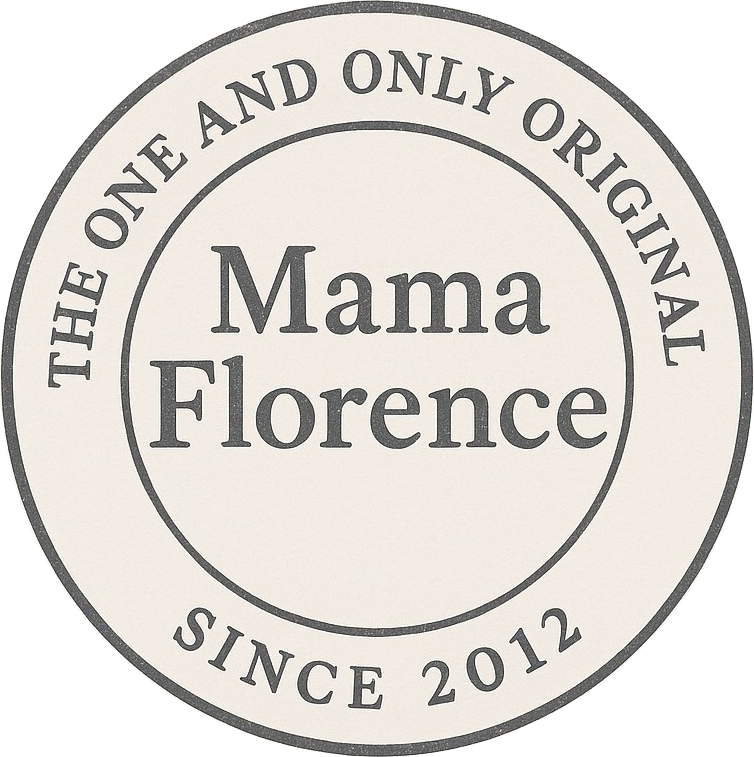The Most Important Herbs in Italian Cuisine

History, Benefits & Iconic Recipes
At Mama Florence Cooking School, teaching how to cook also means learning to recognize and value the simplest ingredients — like fresh herbs. From north to south, these aromatic plants are fundamental in defining the regional identity of Italian dishes. But they’re not just for flavor: many have beneficial properties, ancient histories, and deep roots in Mediterranean agricultural culture.
Let’s explore the green stars of Italian cooking, including their historical roots, Latin names, health benefits, and iconic uses.
1. Basil (Ocimum basilicum)
Origin: Tropical Asia, cultivated in Italy since ancient times.
Where it grows best: Liguria, Campania, Sicily
Benefits: Anti-inflammatory, digestive, rich in antioxidants
Basil is the fragrant heart of Mediterranean cuisine. The Romans considered it a royal plant (from the Greek basileus, meaning "king"). Its tender, aromatic leaves release a distinct scent, especially when paired with tomatoes. In folk tradition, it's also a symbol of love.
Iconic uses: Genovese pesto, Caprese salad, garnish for pizza and fresh pasta
2. Rosemary (Salvia rosmarinus, formerly Rosmarinus officinalis)
Origin: Mediterranean Basin
Where it grows best: Tuscany, Liguria, southern coasts
Benefits: Stimulating, memory-boosting, aids digestion
With its needle-like green leaves and resinous scent, rosemary is among the hardiest herbs. From the Latin ros marinus (“dew of the sea”), it grows even in rocky, dry soil. The Romans used it in both religious and funerary rites.
Iconic uses: Roasted potatoes, rustic focaccia, meat and fish roasts
3. Sage (Salvia officinalis)
Origin: Dry regions of Europe
Where it grows best: Tuscany, Lazio, Umbria
Benefits: Antibacterial, digestive, antiseptic
Its name comes from salvus (“healthy” or “safe”) due to its healing properties. With velvety, pungent leaves, sage has long been used in traditional Italian country cooking. In ancient times, it was considered sacred and capable of curing all ills.
Iconic uses: Saltimbocca alla romana, butter and sage for gnocchi, fried leaves
4. Parsley (Petroselinum crispum)
Origin: Eastern Mediterranean
Where it grows best: Everywhere — grows year-round
Benefits: Rich in vitamin C, cleansing, detoxifying
In Italy, parsley is so common there's a saying: “essere come il prezzemolo” — to be everywhere. It’s a versatile base that enhances dishes without overpowering them. Its fresh, herbaceous taste works well both raw and cooked.
Iconic uses: Gremolata, seasoning for fish, soffritto base
5. Oregano (Origanum vulgare)
Origin: Eastern Mediterranean
Where it grows best: Sicily, Calabria, Campania
Benefits: Antiseptic, digestive
From Greek oros (mountain) and ganos (joy), oregano is the "joy of the mountain." Its aroma intensifies when dried. A staple of southern Italian cooking, it often enhances preserves and salads.
Iconic uses: Pizza, tomato salads, marinades
6. Thyme (Thymus vulgaris)
Origin: Dry Mediterranean regions
Where it grows best: Central and southern hills and Apennines
Benefits: Antibacterial, balsamic
Tiny leaves, big aroma — thyme has a strong, penetrating fragrance. The Egyptians used it in embalming, and in ancient times it symbolized courage. It pairs well with legumes, meats, and hearty dishes.
Iconic uses: Rustic soups, meat roasts, spiced bread
7. Marjoram (Origanum majorana)
Origin: North Africa and southwestern Asia
Where it grows best: Central and southern Italy
Benefits: Calming, digestive, used in aromatherapy
Similar to oregano but with a sweeter, milder aroma, marjoram is often used fresh in refined recipes. It was once a symbol of happiness and woven into wedding garlands.
Iconic uses: Stuffings, creamy sauces, braised vegetables
8. Bay Leaf (Laurus nobilis)
Origin: Mediterranean Basin
Where it grows best: Central and southern Italy
Benefits: Digestive, stimulating, helps with stomach issues
Sacred to the Greeks and Romans and a symbol of glory and wisdom, bay leaves are one of the few herbs used whole rather than chopped. Ideal for slow cooking and robust dishes.
Iconic uses: Broths, legume soups, stews, preserves
9. Wild Fennel (Foeniculum vulgare)
Origin: Southern Europe, grows wild
Where it grows best: Sicily, Sardinia, Maremma (Tuscany)
Benefits: Digestive, carminative, refreshing
With its strong, anise-like scent, wild fennel is a southern Italian favorite. Both the tender shoots and dried seeds are used in cooking. The ancient Romans saw it as a symbol of renewal and purity.
Iconic uses: Sarde a beccafico, sausages, fennel bread
10. Juniper (Juniperus communis)
Origin: Europe and Asia
Where it grows best: Hilly and mountainous regions of Italy
Benefits: Antiseptic, diuretic, digestive
Its resinous, pungent berries are used in small doses to flavor hearty meats and game. A key aroma in gin, juniper brings depth to rich, wintry recipes.
Iconic uses: Stewed game, sauerkraut, meat marinades
Herbs That Tell a Story
These herbs are more than just flavor — they carry centuries of tradition, regional identity, and healing knowledge. At Mama Florence, we love teaching how to use them consciously, because every dish is also a journey into Italian culture.

